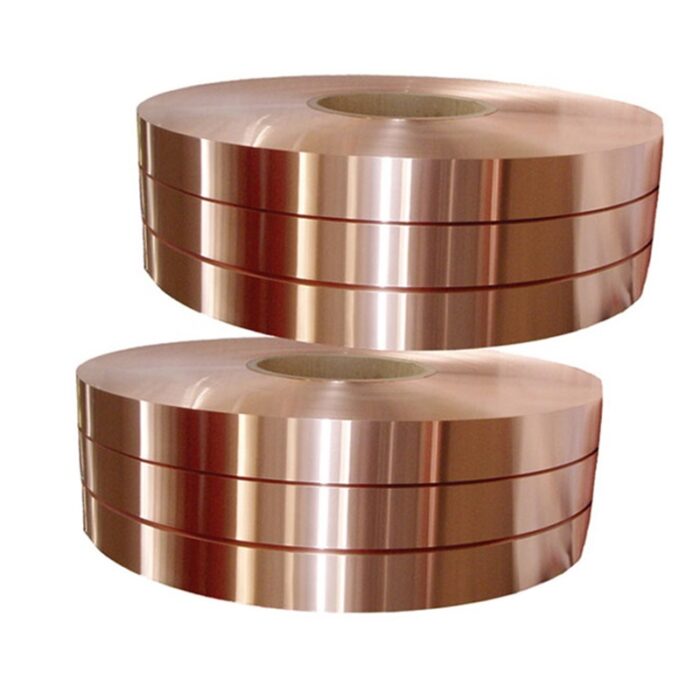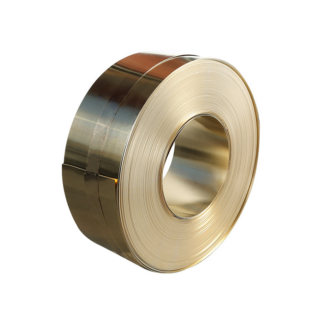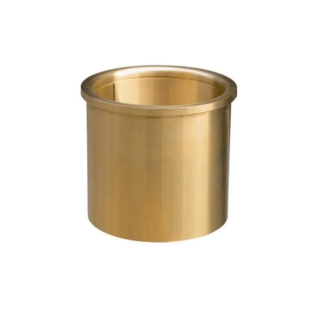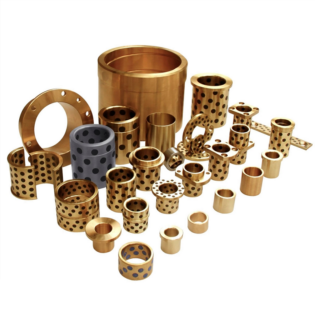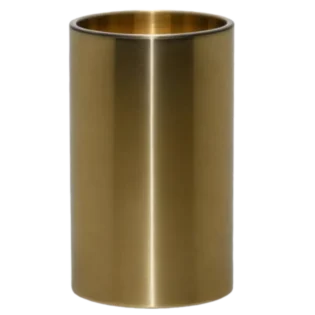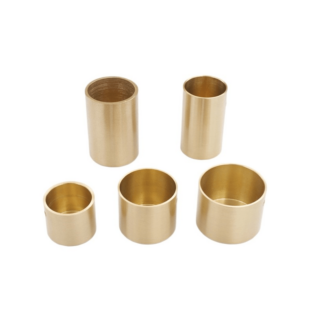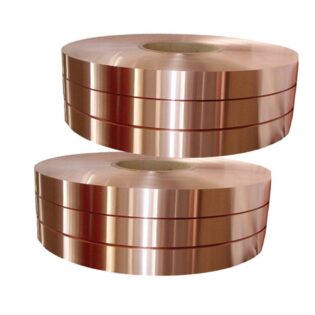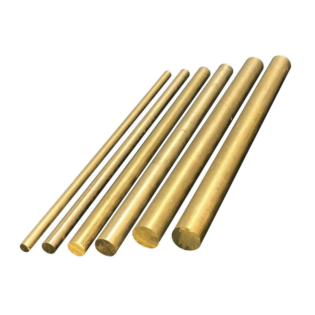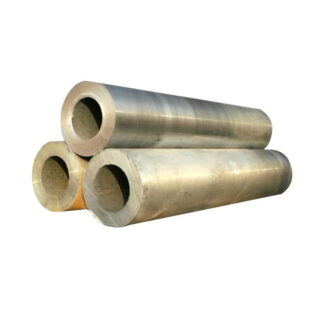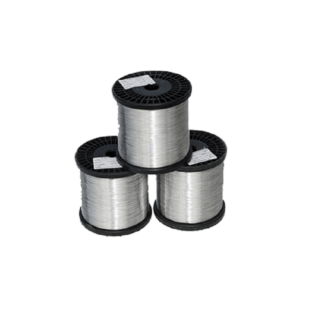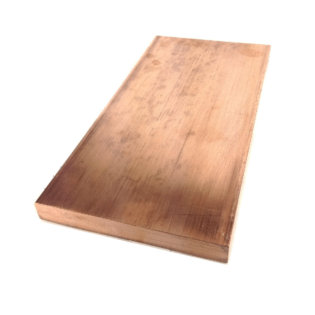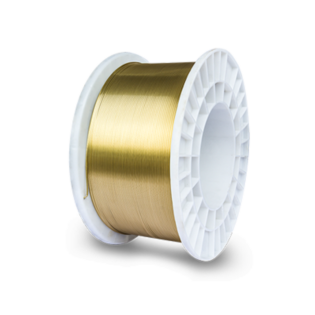Qsn6.5-0.1 Description
Qsn6.5-0.1 is used to make spring and conductive spring contact sheet, wear-resistant parts and anti-magnetic parts in precision instruments, such as gear, brush box, vibration plate, contactor, etc.
Qsn6.5-0.1 Tin Bronze Application
Tin bronze is a non-ferrous metal alloy with the lowest casting shrinkage rate, which is used to produce castings with complex shape, clear outline and low air tightness requirements.
Tin phosphor bronze is very corrosion-resistant in atmosphere, sea water, fresh water and steam, and is widely used in steam boilers and Marine parts.
Phosphor tin bronze has good mechanical properties and can be used as wear-resisting and elastic parts of high precision working machine.
Leaded tin bronze is commonly used as wear-resistant parts and plain bearings. Zinc-containing tin bronze can be used as high air tightness castings.
| |
China standard | QSn6.5-0.1 |
China standard | QSn6.5-0.1 |
American standard | C51900 |
Japanese standard | C5191 |
| |
Sn | 6.0-7.0 |
P | 0.1-0.25 |
With | margin |
Sum of impurities | ≤ 0.1 |
| ||
≥ 13.5 | %IACS | |
Conductivity | ≥ 7.83 | MS/m |
Thermal conductivity | 75 | W/(m.K) |
Thermal expansion coefficient | 17.2 | 10 -6 / K |
Density | 8.8 | g/cm3 |
Elastic Modulus | 118 | GPa |
Specific heat capacity | 0.38 _ | J/(g.K) |
Poisson’s ratio | 0.33 | — |
| |
Cold workability | Excellent |
Machinability | Generally |
Electroplating | Excellent |
Hot-dip tinning | Excellent |
Solderability | Excellent |
Resistance welding | Good |
Typical use
Widely used in the manufacture of elastic components, wear-resistant parts and anti-magnetic parts in precision instruments, such as spring contact pieces or other springs with good electrical conductivity; various altimeters in the aviation industry, springs of speedometers, connecting rods, etc. , Gears, brush boxes, contactors, etc. in precision instruments.
| ||||
State | Tensile Strength ( MPa ) | Elongation ( A 11.3 , % ) | Vickers hardness | |
M | O60 | 350-420 | ≥45 | ≤120 |
Y4 | H01 | 390-510 | 35 | 110-155 |
Y2 | H02 | 490-610 | 10 | 150-190 |
AND | H04 | 590-690 | 8 | 180-230 |
T | H06 | 635-720 | ≥2 | 200-240 |
TY | H08 | ≥ 690 | — | ≥ 210 |
| ||||||
Thickness ( mm ) | 0.08-0.15 | >0.15-0.20 | >0.2-0.3 | >0.3-0.4 | >0.4-0.6 | >0.6-0.8 |
Tolerance ( mm ) | ± 0.0025 | ± 0.004 | ± 0.005 | ± 0.0075 | ± 0.01 | ± 0.0125 |
Thickness ( mm ) | >0.8-1.2 | >1.2-1.5 | >1.5-2.0 | >2.0-2.6 | >2.6-3.0 | >3.0-4.0 |
Tolerance ( mm ) | ± 0.015 | ± 0.02 | ± 0.025 | ± 0.03 | ± 0.04 | ± 0.05 |
| ||||||
Thickness ( mm ) | >0.08-0.5 | >0.5-1.0 | >1.0-1.8 | >1.8-3.0 | >3.0-4.0 | |
Width and Tolerance (mm) | ≤ 50 | ± 0.05 | ± 0.08 | ± 0.1 | ± 0.2 | ± 0.3 |
>50-100 | ± 0.075 | ± 0.1 | ± 0.15 | ± 0.2 | ± 0.3 | |
>100 | ± 0.1 | ± 0.15 | ± 0.2 | ± 0.3 | ± 0.5 |
| |
Thickness ( mm ) | Edge Burr ( mm ), no greater than |
≤ 0.50 | 0.02 |
>0.50-1.0 | 0.04 |
>1.0-2.0 | 0.05 |
>2.0-4.0 | 0.1 |
| ||||
Condition | Minimum Bend Inside Radius ( mm ) | |||
Thickness /t : 0.15-0.30mm | Thickness /t : 0.30-1.0mm | |||
Good direction | Bad direction | Good direction | bad direction | |
O60 | 0 × t | 0 × t | 0 × t | 0 × t |
H01 | 0 × t | 0 × t | 0 × t | 0 × t |
H02 | 0 × t | 0 × t | 0 × t | 0 × t |
H04 | 0 × t | 0.5 × t | 0 × t | 1.0 × t |
H06 | 0 × t | 2.0 × t | 1.0 × t | 2.5 × t |
H08 | 1.5 × t | 4.0 × t | 2.0 × t | 5.0 × t |
| |
Ra (μ m ) | ≤ 0.3 |
Side curvature h ( mm/m ) | |||
| Width ( mm ) | Thickness ( mm ) | ||
0.08-0.6 | >0.6-2.0 | >2.0-4.0 | |
≤ 9 | ≤ 1.0 | ≤ 1.0 | — |
>9-13 | ≤ 1.0 | ≤ 1.0 | — |
>13-25 | ≤ 1.0 | ≤ 1.0 | — |
>25-50 | ≤ 1.5 | ≤ 1.0 | — |
>50-100 | ≤ 1.5 | ≤ 1.5 | — |
>100-625 | ≤ 1.5 | ≤ 1.5 | — |
| |||
Width L ( mm ) | ≤ 50 | >50-200 | >200-625 |
Transverse curvature h ( mm ), not more than | 0.01 × L | 0.015 × L | 0.02 × L |
| ||
width ( mm ) | ≤ 100 | >100-625 |
Longitudinal straightness h ( mm/m ) | ≤ 3 | ≤ 5 |
| |||
width ( mm ) | ≤ 30 | >30-100 | >100-625 |
Torsion (°) | ≤ 10 | ≤ 5 | — |
| |||
width ( mm ) | ≤ 100 | >100-300 | >300-625 |
Warpage h ( mm/m ) | ≤ 50 | ≤ 100 | — |

